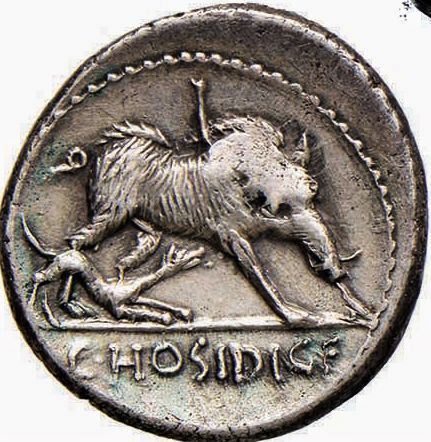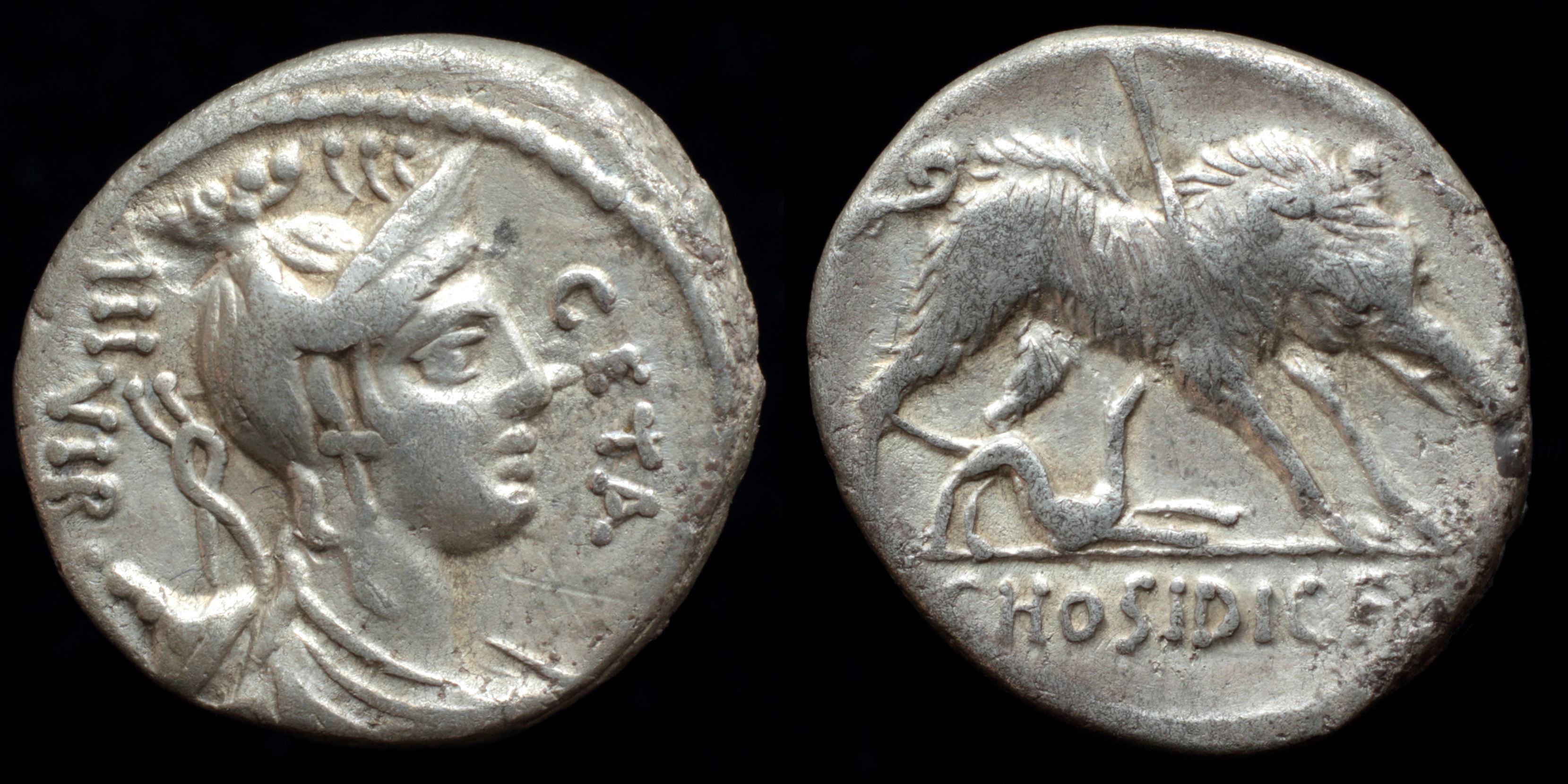He was rescued by his son who pretended that the elder Geta had taken his own life, and performed the funeral rites while concealing his father on one of his farms.
The father disguised himself by wearing a bandage over one eye; but when he was pardoned, he found that he could no longer see with that eye.


Reverse: attacked boar right, spear in shoulder, hound below, C HOSIDI C F
Die Orientation: -
Weight: 3.6 g
(14).jpg)
Reverse: The Calydonian boar standing right, it’s front legs thrust forward, pierced through by a spear and harried by a hound below; C•HOSIDI•C•F in exergue.
Die Orientation: 6 H
Weight: 3.98 g
_2.jpg)
Reverse: Calydonian boar standing right, pierced by spear and harried by hound below; C HOSIDI C F in exergue
Die Orientation: 6 H
Weight: 3.89 g
Ex. Andrew McCabe Collection (CNG Electronic Auction 472; Lot 259); Ex. Numismatica Ars Classica 114 (Part 2; Lot 1326); Ex. Gorny & Mosch 186 (Lot 1798). Notes from Andrew McCabe: "I purchased this coin due to the really exceptional speared boar and dog on the reverse and the very large flan, but later found an example from the collection of Benjamin Nightingale, a well-known 19th century antiquarian. My new coin has a less cute boar, but I had to choose between provenance and art." Andrew's loss is my gain!
